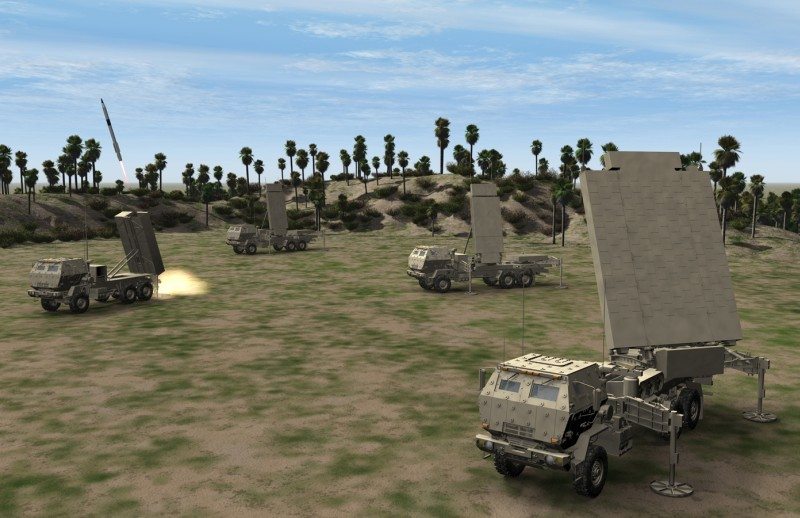A Medium Extended Air Defense System (MEADS) launcher and BMC4I Tactical Operations Center (TOC) have entered system test and integration at Pratica di Mare (PdM) Air Force Base in Italy. This milestone marks the first integration tests involving two completed MEADS system elements.
During the initial test series, MEADS will demonstrate launcher and TOC functions, including system attachment/detachment in the first demonstration of MEADS plug-and-fight operation. Later addition of the Multifunction Fire Control Radar (MFCR) and a MEADS System Stimulator will enable demonstration of full MEADS system operation during simulated engagements of live target aircraft.
After pre-integration at Pratica di Mare, the MEADS system will complete integration at White Sands Missile Range, NM, and begin flight testing in 2012.
The lightweight MEADS launcher is easily transportable, is tactically mobile, and capable of rapid reload. It carries up to eight PAC-3 Missile Segment Enhancement (MSE) Missiles and achieves launch readiness in minimum time. Through improvements in range, interoperability, mobility, and full 360-degree defense capability against the evolving threat, MEADS improves capability to defend troops, friends, and allies in critical areas around the globe.
The Battle Management Command, Control, Communications, Computers and Intelligence (BMC4I) TOC implements a revolutionary network-centric open architecture that allows any combination of sensors and launchers to be task organized into a single Air and Missile Defense battle element. Through a capability called “plug-and-fight,” sensors, shooters or other TOCs simply act as nodes on the network. From the MEADS Battle Manager, a commander can dynamically add or subtract elements as the situation dictates without shutting the system down.
MEADS International President Dave Berganini said, “The MEADS team is pleased to be at Pratica di Mare Air Force Base, operating in a new dedicated MEADS test area, and demonstrating the operational capabilities MEADS provides against next-generation threats. The new test area provides ideal conditions to complete integration testing before the first MEADS system moves to the White Sands Missile Range later this year.”
NAMEADSMA General Manager Gregory Kee said, “MEADS will provide superior capabilities with unprecedented flexibility compared to current systems. Its 360-degree rotating capability will bring advanced capability to the warfighter – both in situational awareness and in being able to address threats from any direction. It provides dramatically increased capabilities over what’s available today.”
MEADS has been shown to defend up to eight times the coverage area with far fewer system assets. This allows for a substantial reduction in deployed personnel and equipment, with less demand for airlift.
Under development by Germany, Italy and the United States, MEADS is a mobile system that was designed to replace Patriot in the United States, Nike Hercules in Italy and the retired Hawk system in Germany. The system was designed to permit full interoperability between the U.S. and allied forces, and it is the only medium-range air defense system to provide full 360-degree coverage.
MEADS was designed to meet the challenging new requirements not addressed by any previous or planned Air and Missile Defense system. The system will combine superior battlefield protection with extensive flexibility, allowing it to protect maneuver forces and critical assets against tactical ballistic missiles, cruise missiles, unmanned aerial vehicles and aircraft. It also provides an open architecture for 21st century air and missile defense system-of-system integration capabilities that allow operational mission-tailoring. MEADS is designed to provide greater firepower with less manpower than current systems, producing dramatic operation and support cost savings.
MEADS International, a multinational joint venture headquartered in Orlando, FL, is the prime contractor for MEADS. Major subcontractors and joint venture partners are MBDA in Italy, LFK in Germany and Lockheed Martin in the United States. Today, 1800 employees from these companies are completing development of MEADS, which is closely watched as a model program for collaborative transatlantic development.
The United States has funded 58 percent of the MEADS program, and European partners Germany and Italy provided 25 percent and 17 percent respectively as partners in the NATO Medium Extended Air Defense System Management Organization (NAMEADSMO). Its program management agency NAMEADSMA is located in Huntsville, AL.










